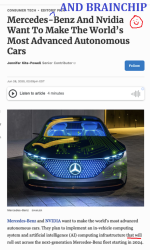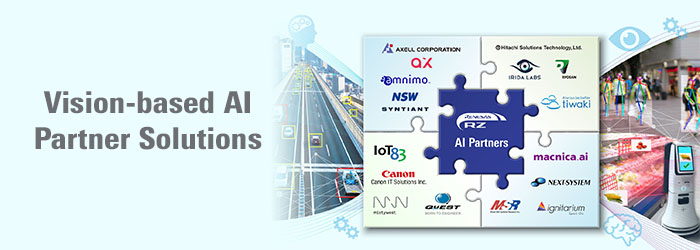Some here will recall the former CEO Mr. Dinardo speaking in a webinar about a project/experiment in China using AKIDA technology to monitor and improve electricity use in a cities power grid.
The following article explains this use and how and why it is being considered in the USA:
Zapped: The grid is under respiratory assistance. Can AI solve this problem?
Leave a Comment
pxFuel
America’s electrical system has long been waiting for an overhaul. With a 2021 report from the American Society of Civil Engineering indicating that 70% of T&D lines are over 25 years old, it’s no surprise that large and sustained outages are occurring with increased frequency across the country.
Last year, major blackouts in California and Texas were both triggered by extreme weather events, causing local electricity demand to exceed supply. As climate change fuels extreme weather events, factory and city officials are increasingly turning to artificial intelligence technologies to predict energy consumption levels days in advance, mitigating the potential for power outage incidents and increasing the overall reliability of the power system.
To understand the problems facing today’s power grid, which by one design is the world’s largest and most complicated machine, I contacted Steve Kwan, director of product management at Beyond Limits, which develops industrial AI for growth in a variety of industries.
GN: Can you explain some of the challenges currently facing grid operators in the United States?
Steve Kwan: The aging power grid is being tested as it expands to support a much higher volume of users than it was designed for under much more difficult circumstances. Historically, electricity has been delivered from large generators, such as power stations, to consumers. Under normal conditions, the weather does not play a big role in the decisions network managers have to make.
However, the explosion of distributed energy resources such as rooftop solar, commercial solar, and wind installations creates many other scenarios that grid managers need to consider when deciding how best to operate the grid. Now, with solar power on rooftops, energy can flow “backwards” in certain situations. This means that the cost of production can be greatly affected by weather and sunshine conditions.
These additional parameters greatly influence network manager decisions on how best to operate the network. As a result, there is a clear need for a more resilient power grid, especially as climate change experts indicate that global warming will lead to an increase in natural disasters in the years to come. The call for carbon neutrality and net-zero emissions has also bolstered efforts to transition to green energy, and as new regulations spread, industry will need to adapt to changes in standards that could significantly alter the operations.
GN: Within the network management ecosystem, where are we seeing the penetration of AI and ML technologies? What is the use case here?
Steve Kwan: AI and ML technologies are superior in their ability to learn from past behaviors and predict future needs. One of the most critical elements of grid management is the need to ensure that electricity is delivered efficiently and available at the lowest cost. As such, it is always a matter of verifying that there is sufficient power supply to meet the demand.
However, electricity supply and demand are constantly changing. Electricity demand fluctuates throughout the day due to human needs and activities. Supply and demand are influenced by weather conditions. The proliferation of electric vehicles and IoT devices is also changing energy consumption patterns. On the supply side, changes in the way we produce electricity make it much more difficult to match supply and demand. From declining fossil fuel generation to increasing renewables and climate change, grid management has become a headache both in real time and when planning for the future.
AI and ML technologies are entering the network ecosystem due to their ability to learn usage patterns and provide accurate predictions of future needs, making this technology the ideal solution for network management. AI can analyze the masses of data produced by factories and accurately predict when there will be an abundance of energy to charge the batteries versus when to drain them.
Artificially intelligent time horizon analytics will lead to dramatic improvements, allowing manufacturers to see the big picture of their operations. AI can be used to sift through all data points, including past weather conditions, current network status, and potential points of failure. As such, electricity providers use AI and ML technologies to optimize their dispatch and scheduling activities, forecast market demands, plan future business expansion, and more. Consumers use these technologies to plan and optimize their energy consumption behaviors to take advantage of excess energy and prices.
For example, consumers decide when to charge their electric vehicle based on time-of-use pricing, and in some cases can even meet grid demand by returning electricity from home batteries. to the network.
GN: When we talk about energy, we are obviously also talking about environmental concerns. What improvements can AI bring to waste and carbon emissions?
Steve Kwan: Today, the largest source of carbon emissions comes from burning fossil fuels. Fortunately, AI technologies can be harnessed to reduce these emissions in several ways. AI can reduce energy waste by helping factory and city officials predict energy consumption levels days in advance. With this foresight, producers can plan their operations based on anticipated demands and produce energy with precision. AI can also help grid managers know when to store energy or cut off in micro-grids to achieve a constant flow of energy and meet consumption demand. This not only saves energy, but also reduces stress by imposing restrictions and limitations on the network that take line capacity and congestion into account.
In addition to predicting consumption levels, AI technologies are reducing carbon emissions by helping industry switch to renewable energy sources like solar and wind. By anticipating weather conditions using historical data and impending weather patterns, these solutions can predict the availability of naturally generated energy. This allows managers to forecast the mix of renewables and traditional fossil energy needed to meet anticipated demand while maximizing the use of renewables. It also makes renewable energy sources more attractive in the energy sector, as this previously unpredictable source of energy becomes increasingly reliable.
GN: Are there any concerns about these new AI technologies or that adoption is happening too quickly?
Steve Kwan: As with all technologies, digital AI technologies need to be checked and checked from time to time, as they are often “black box” applications that are highly dependent on the implementation and data quality of the whole system. training data. When human knowledge and expertise are incorporated into digital AI technologies, they are dramatically enhanced, which can dramatically change results and generate better predictions and recommendations.
GN: What future for AI in network management?
Steve Kwan: With continued improvements in AI and ML technologies, we will be able to increase the dataset size, frequency, speed, and accuracy of model predictions. Together, this would provide better tools for network operators to optimally match supply to demand in an unprecedented way. This creates the opportunity for optimal network and generation investments in areas that would provide the most benefit. For example, AI and ML technologies can be used to optimize the placement and installation of renewable energy such as solar and wind farms. Better network modeling will help operators route energy more efficiently and allow network operators to reduce the total cost to consumers by minimizing congestion. The more accurate the models, the better network operators will be able to plan their operations and put in place mitigation measures in anticipation of impending problems”
My opinion only DYOR
FF
AKIDA BALLISTA







